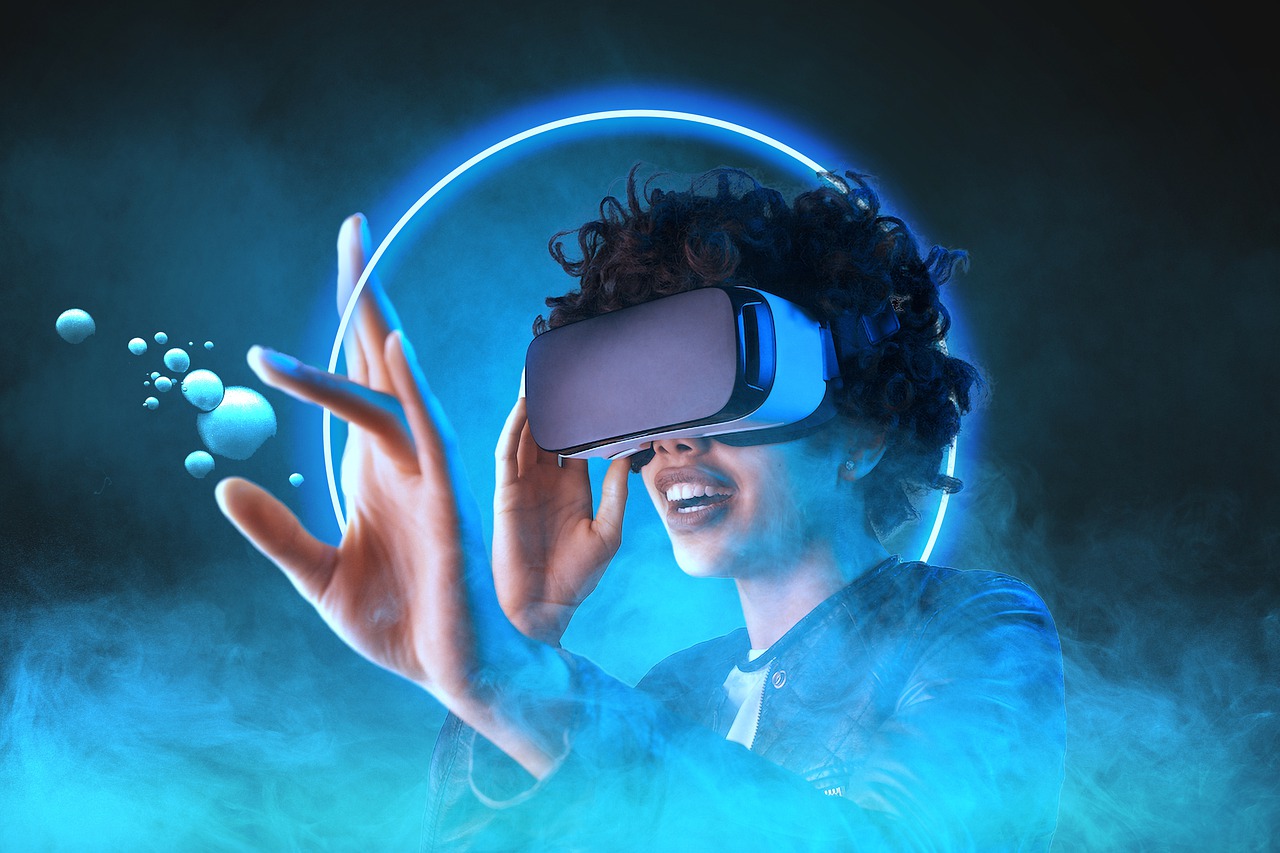The business world is constantly evolving, and keeping up with the latest trends in innovation can be the key to staying ahead of the competition. As we move into 2023, there are many emerging trends that businesses need to be aware of in order to succeed. In this article, we will explore the top 20 trends in business innovations for 2023, including the technology, sustainability, consumer, and organizational trends that will shape the business landscape in the coming years.
Technology Trends
1. AI (Artificial Intelligence) and Machine Learning (ML) Applications
AI and Machine Learning (ML) have been transforming businesses in recent years, and this trend is set to continue in 2023. AI and ML are already being used to automate processes, analyze data, and improve customer experiences. In the coming years, we can expect to see even more innovative applications of these technologies in areas such as predictive analytics, natural language processing, and chatbots.

2. Blockchain Technology in Business Operations
Blockchain technology could change the way businesses work by making them more transparent, secure, and efficient. In 2023, more businesses are likely to use blockchain for everything from managing their supply chains to making financial transactions. The technology offers the ability to track products from the source to the customer, reducing the risk of fraud and counterfeit products.
3. Internet of Things (IoT) and Edge Computing
IoT is a system of devices and sensors that are all linked together and can talk to each other to share and collect data. We can expect more businesses to use the Internet of Things (IoT) in 2023 to improve their operations, cut costs, and make the customer experience better. Edge computing, which brings the processing and storage of data closer to the source, will also become more prevalent as businesses seek to analyze data in real-time.
4. AR (Augmented Reality) and Virtual Reality (VR) for Business Applications
Augmented Reality (AR) and Virtual Reality (VR) have already been used in gaming and entertainment, but in 2023, we can expect to see more businesses adopting these technologies for training, design, and marketing. AR and VR can provide immersive and interactive experiences, allowing customers to visualize products before making a purchase or enabling employees to train in realistic simulations.
5. Quantum Computing and its Business Applications
More companies are likely to embrace circular business models in 2023, which reduce waste and reuse, repair, or recycle resources. In 2023, we expect more businesses to look into how quantum computing could help them solve hard problems and gain insights that can’t be done with traditional computing.
Sustainability Trends
6. Circular Economy and Sustainable Business Practices
As more and more companies see the need to lessen their environmental impact, the concept of the “circular economy” has gained traction. In 2023, we can anticipate an increase in the prevalence of “circular business models,” which aim to reduce waste through more reuse, repair, and recycling. This trend will be driven by consumer demand for sustainable products and services and the need for businesses to reduce their carbon footprint.
7. Green Energy and Renewable Energy Sources for Business Operations
As businesses become more focused on sustainability, we can expect to see more adoption of green energy and renewable energy sources for their operations. In 2023, businesses will continue to invest in solar and wind power, as well as other forms of renewable energy such as hydroelectricity and geothermal energy. This trend will help businesses to reduce their dependence on fossil fuels and reduce their carbon footprint.
8. Eco-Friendly and Sustainable Products and Services
Consumer demand for eco-friendly and sustainable products and services is growing, and in 2023, we can expect to see more businesses responding to this trend by offering environmentally friendly options. This could include products made from recycled materials, biodegradable packaging, and energy-efficient appliances. By offering sustainable products and services, businesses can attract environmentally conscious consumers and reduce their environmental impact.
9. Carbon Offsetting and Carbon Neutrality
In addition to adopting sustainable practices, businesses can also take steps to offset their carbon emissions and become carbon neutral. In order to reduce their carbon footprint, corporations will increasingly participate in carbon offset initiatives like reforestation and renewable energy in 2023. Some businesses may also aim to achieve carbon neutrality by reducing their emissions as much as possible and offsetting the rest.
Consumer Trends
10. Personalization and Customization
Consumers are increasingly seeking personalized, and customized products and services, and businesses are responding to this trend by offering more options for customization. In 2023, we can expect to see businesses using technology such as AI and machine learning to personalize products and services based on customer data. This could include personalized marketing, product recommendations, and even customized product design.
11. Digital Customer Experiences
The rise of e-commerce and digital channels has transformed the way consumers shop and interact with businesses. More companies will likely invest in digital customer experiences in 2023 in order to offer seamless, practical, and customized encounters. This could include chatbots, virtual assistants, and mobile apps that enable customers to shop and access support from anywhere.
12. Subscription Models and Membership Programs
Subscription models and membership programs have become increasingly popular in recent years, and in 2023, we can expect to see more businesses adopting this approach. This could include offering subscription-based services, loyalty programs, and membership tiers that provide exclusive benefits to loyal customers. By offering these programs, businesses can build long-term relationships with their customers and increase customer retention.
13. Social Responsibility and Values-Based Consumerism
As consumers become more aware of social and environmental issues, they look for companies that share their principles. In 2023, we are looking to see more businesses responding to this trend by prioritizing social responsibility and values-based consumerism. This could include supporting charitable causes, adopting sustainable practices, and promoting diversity and inclusion.
Organizational Trends
14. Remote and Hybrid Work
We can anticipate seeing more organizations permanently embracing remote and hybrid work arrangements in 2023 as a result of the COVID-19 pandemic. This could include offering more flexible work arrangements, providing remote work tools and technologies, and investing in virtual collaboration platforms. By adopting these approaches, businesses can attract and retain top talent, reduce costs, and improve work-life balance for employees.
15. Employee Experience and Wellbeing
As businesses focus on attracting and retaining talent, they increasingly recognize the importance of employee experience and wellbeing. In 2023, more businesses will put money into programs and projects that improve the health and happiness of their workers, such as mental health support, flexible work arrangements, and opportunities for career growth. By prioritizing employee wellbeing, businesses can improve productivity, reduce turnover, and create a positive work culture.
16.Data-Driven Decision Making and Analytics
Data is becoming increasingly important for businesses, and in 2023, we can expect to see more businesses adopting data-driven decision making and analytics. This could include using predictive analytics to forecast trends and make informed decisions, using big data to optimize operations and improve customer experiences, and using business intelligence tools to gain insights into key metrics.
17. Agility and Innovation
In today’s rapidly changing business landscape, agility and innovation are essential for success. In 2023, we are looking to see more businesses adopting an agile approach to business, including iterative development, cross-functional teams, and rapid prototyping. This approach enables businesses to respond quickly to changing market conditions and customer needs and to innovate more effectively.
18. Automation and Artificial Intelligence
Automation and artificial intelligence (AI) are transforming the way businesses operate, and in 2023, we can expect to see more businesses adopting these technologies. This could include using AI and machine learning to automate routine tasks, improve efficiency, and enhance customer experiences. By adopting automation and AI, businesses can reduce costs, increase productivity, and drive innovation.
19. Cybersecurity and Data Privacy
As businesses become increasingly digital, cybersecurity and data privacy are becoming critical issues. In 2023, we are looking to see more businesses investing in cybersecurity measures to protect their data and systems from cyber threats. This could include using encryption and secure protocols, implementing access controls and authentication measures, and conducting regular security audits. By prioritizing cybersecurity and data privacy, businesses can safeguard their assets and build trust with their customers.
20. Digital Transformation
Finally, digital transformation is a trend that will continue to shape the business landscape in 2023 and beyond. Digital transformation involves using technology to transform business processes, operations, and customer experiences. In 2023, we are looking to see more businesses investing in digital transformation initiatives, such as migrating to the cloud, adopting new software and tools, and digitizing their operations. By embracing digital transformation, businesses can improve efficiency, reduce costs, and drive innovation.
Bonus Video: Top Tech Trends for 2023
Conclusion
The business landscape is constantly evolving, and in 2023, we can expect to see a number of trends that will shape the future of business. From sustainability and social responsibility to digital transformation and automation, businesses that embrace these trends will be better positioned to succeed in the years to come.
As businesses adapt to changing consumer and organizational trends, they will need to be agile, innovative, and data-driven to stay competitive in a rapidly changing market. By prioritizing these trends, businesses can build resilient and sustainable businesses that can thrive in the years ahead.












